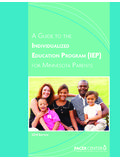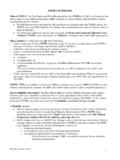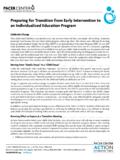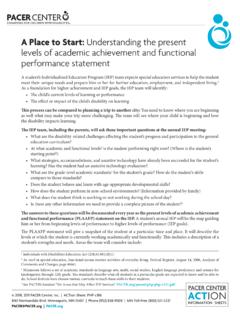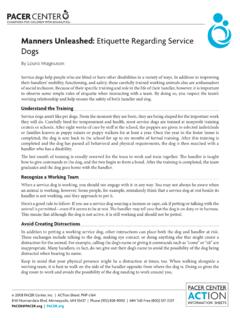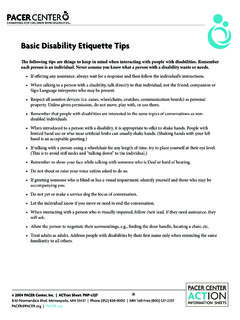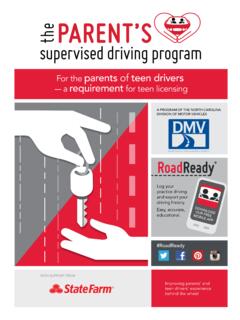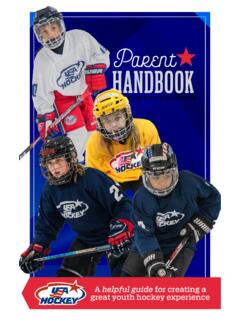Transcription of A Place to Start: Understanding the present levels of ...
1 2018, 2011 PACER Center, Inc. | ACTion Sheet: PHP-c1868161 Normandale Blvd. Minneapolis, MN 55437 | Phone (952) 838-9000 | MN Toll-Free (800) | CENTERACTIONINFORMATION SHEETSA Place to Start: Understanding the present levels of academic achievement and functional performance statementA student s Individualized Education Program (IEP) team expects special education services to help the student meet their unique needs and prepare him or her for further education, employment, and independent As a foundation for higher achievement and IEP goals, the IEP team will identify: The child s current levels of learning or performance The effect or impact of the child s disability on learningThis process can be compared to planning a trip to another city: You need to know where you are beginning as well what may make your trip more challenging. The team will see where your child is beginning and how the disability impacts learning.
2 The IEP team, including the parents, will ask these important questions at the annual IEP meeting: What are the disability-related challenges affecting the student s progress and participation in the general education curriculum? At what academic and functional levels2 is the student performing right now? (Where is the student s starting point?) What strategies, accommodations, and assistive technology have already been successful for the student s learning? Has the student had an assistive technology evaluation? What are the grade-level academic standards3 for the student s grade? How do the student s skills compare to those standards? Does the student behave and learn with age-appropriate developmental skills? How does the student perform in non-school environments? (Information provided by family) What does the student think is working or not working during the school day? Is there any other information we need to provide a complete picture of the student?
3 4 The answers to these questions will be documented every year as the present levels of academic achievement and functional performance (PLAAFP) statement on the IEP. A student s annual IEP will be the map guiding him or her from beginning levels of performance to higher levels of performance (IEP goals).The PLAAFP statement will give a snapshot of the student at a particular time and Place . It will describe the levels at which the student is currently working academically and functionally. This includes a description of a student s strengths and needs. Areas the team will consider include:1 Individuals with Disabilities Education Act (IDEA) 601(d)(1)2 As used in special education, functional means routine activities of everyday living. Federal Register, August 14, 2006, Analysis of Comments and Changes, page Minnesota follows a set of academic standards in language arts, math, social studies, English language proficiency and science for kindergarten through 12th grade.
4 The standards describe what all students in a particular grade are expected to know and be able to do. School districts have chosen various curricula to teach these skills to their See PACER s handout Six Areas that May Affect IEP Services 2018, 2011 PACER Center, Inc. | ACTion Sheet: PHP-c186 | Academic Communication Functional General intelligence Health Motor or physical Sensory (such as vision and hearing) Social and emotional Transition to postsecondary adult living (beginning in ninth grade)The PLAAFP statement will include information gathered from various sources including: Ending levels of performance on last year s goals Any new special education assessment results Performance on district and statewide assessments, including identification of skills and knowledge already attained in relation to academic grade-level standards Classroom grades and observations, including behavior data Information from the student and parents (you have important information to share about your child and you and school professionals may see your child in different ways in different environments and situations) Interests and strengths, including non-curricular areas (these can provide valuable information about a student s abilities, potential for learning, and possible motivators)
5 Any strategies, accommodations, or assistive technology devices or services that have already shown successIt is important to note that the student s regular education teacher, a required member of the IEP team, is a key team This teacher is familiar with grade-level and age-level expectations for all children so he or she will know how a student is doing on grade-level skills compared to peers. The team will want to make sure that the designated regular education teacher brings the appropriate information to the IEP meeting. For example, an art teacher may be a child s regular education teacher but may not be familiar with the child s reading and math skills. Depending on the time of year that the meeting is held, a regular education teacher for the next grade level may be the best source of regular education information needed for development of this IEP. Other teachers may attend or submit written information as well.
6 The information in the PLAAFP section of the IEP should be written in brief, clear, specific, and accurate statements with enough information to describe the student s current skill levels in objective, measurable terms. If scores are reported, they should either be self-explanatory or PLAAFP statement will lead to the development of annual goals, accommodations, modifications, and other IEP services. All IEP goals should be connected to the PLAAFP statement. Parents knowledgeable about the PLAAFP statement and the IEP process can be an effective part of the IEP team and help their child work toward higher The Individuals with Disabilities Education Act (IDEA) states that the school district must assign one regular education teacher of the student to be at the IEP meeting if the student is or may be participating in the regular education environment during this IEP year. Though parents may agree in writing to excuse one or more IEP team members, PACER recommends that all required IEP team members be present in order to plan an appropriate IEP for a See PACER s Handout PHP-c253, present levels of Academic Achievement and Functional Performance (PLAAFP) Examples




